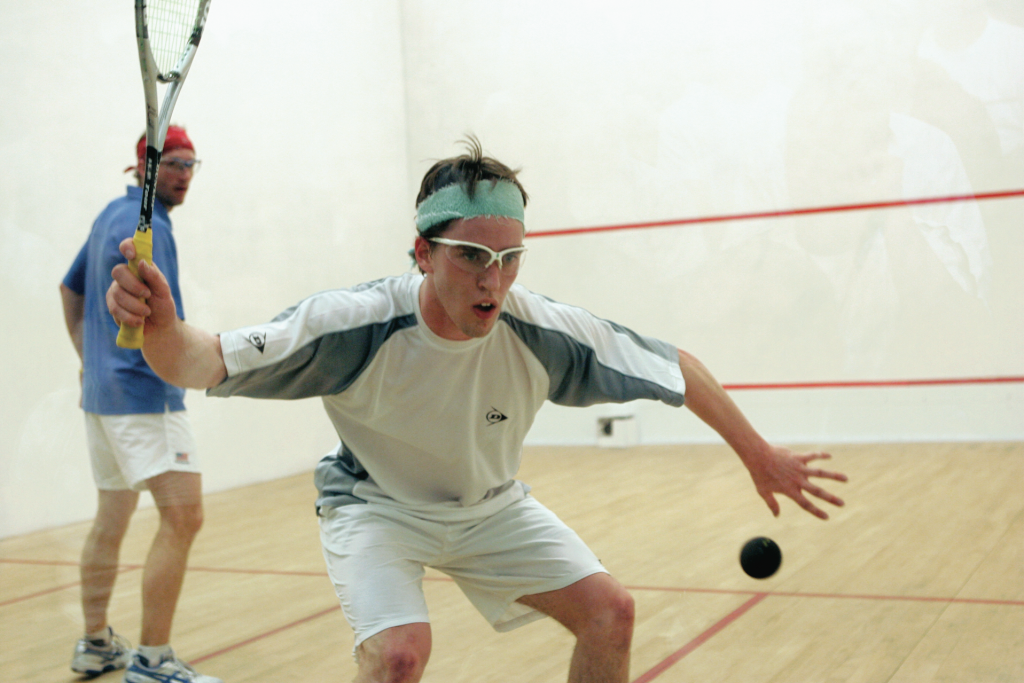
By Jay D. Prince
The last time Portland, OR, played host to a US Squash Championship was in 2001 when players arrived with tuxedos and bow ties for the annual black tie affair on Saturday evening, halfway through the Doubles Nationals. And in 2001, Portland native Julian Illingworth was still an up-and-coming winner of the US Junior Closed under-19, but a first-round victim in the S.L. Green Championships.
Six years later, Illingworth was the hometown favorite to win his third consecutive S.L. Green, and Latasha Khan was looking to extend her record of seven Women’s Closed titles, though a new American—in the form of former World No. 1 Natalie Grainger—was poised to dowse that flame.
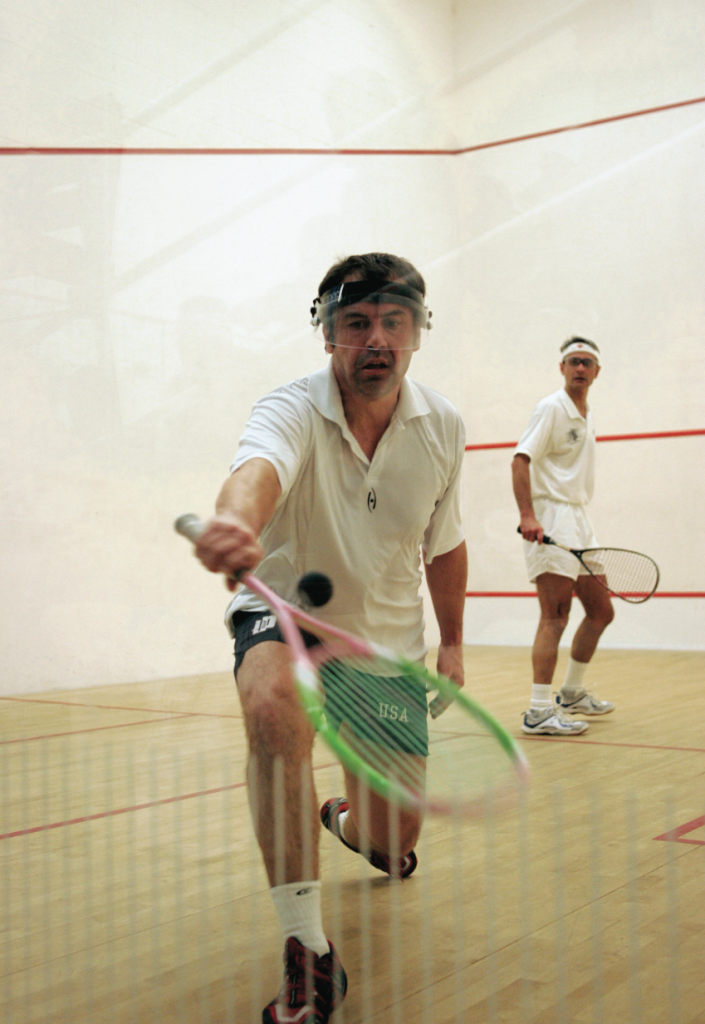
This year would also be the first time in 10 years that the US Championships featured only the age groups. As stated by US Squash last fall, the hope is that the age groups will ultimately morph into two unique championships—one open to anyone, and one reserved for US citizens only. With that planned transition now likely to take a couple years, instead of the originally planned implementation in 2008, the 2007 age groups were unrestricted. But, as was also expected, it was a much smaller event in terms of bodies.
Last fall US Squash announced plans to create three Championships from the previously existing US Championships—the Skill Levels, the Open Age Groups and the Closed Age Groups. The Skill Levels were a hit in February, with the first installment being held in New York City. Step two was the Age Groups as a separate event but without the Open/Closed distinction. As John Musto, the head of the Competition Task Force that established the new structure, said last fall, “eventually, the US Closed Championships will become sort of a boutique tournament, perhaps in a destination location where you would have to qualify to get into it.” One of the keys to becoming a “boutique” event is the ability to move the tournament around the country instead of having to keep it in one place because of it’s cumbersome size.
And despite the fact that the 2007 US Championships was still an Open event, stripping the Skill Levels out presented the first opportunity in several years to move the Championships away from Harvard or Yale. And the Multnomah Athletic Club in Portland served as a perfect host. With its six courts, including two with glass back walls, the MAC made it possible to keep every player at the host venue rather than sending some divisions to outlying clubs. With just under 175 players and 15 divisions, all the participants could keep tabs on every division. And Portland residents walked away with three titles.
“The Multnomah Athletic Club outdid themselves in hosting the event this year,” said US Squash CEO Kevin Klipstein. “The tournament had a very special feel, one completely different from the past since it was separated from the Skill Level Championships. I think players who have participated year over year took some time to adjust to the size but warmed to the change over the weekend since it allowed us to really focus on the age division players. With the event all in one venue, players could easily track their friends in other divisions, while at the same time watch the very best players in the US compete in the S.L. Green and Women’s Championship matches on the stadium court.”

After winning his first S.L. Green title two years ago, Illingworth had moved away from being a player with potential to becoming the expected winner. And last year’s success did nothing to squelch those expectations. Playing on his “home courts” at Yale, where he had just completed four years as the Bulldogs’ anchor, Illingworth said, “I was probably one of the favorites but still, in my own mind, I was able to think of myself as an underdog. I played on that center court every day for four years, so I was very comfortable on it.”
In Portland, however, the pressure to win nearly did Illingworth in. “This year, it had caught up to me that I wasn’t just a contender to win the title; I was supposed to win it,” said Illingworth. “And playing with those expectations is much harder than just playing.” Not to mention the rigorous schedule Illingworth had been pursuing leading up to the event.
“I had had some good results before the US Championships,” said Illingworth, “but I had sort of peaked already. I played a lot of PSA tournaments in January and February and had trained for about two months leading up to them, and I think I peaked both mentally and physically around the Tournament of Champions time.” The payoff was that Illingworth became the first American male ever to win a main round match in a Super Series event by beating Australia’s former World No. 5, Dan Jenson, in five grueling games.
“From then on,” Illingworth recalled, “I had about two weeks until Nationals, and I was just trying to hold onto any form I could. So in years past, Nationals was my main focus for the year, peaking for that one tournament along with a few big college matches. This year, Nationals was still important to me but I had to juggle that with playing PSA and getting my ranking up.”
In the end, Illingworth pulled it all together to capture his third title. Down 2-1 in the final to two-time winner Preston Quick, Illingworth tightened up his game to escape with the last two 11-8 and 11-8. And with the match secured, the pressure of the week finally showed itself when Illingworth snapped his racquet over his knee and threw the two pieces aside. “Yeah, I’m not sure what happened there,” said Illingworth with a relieved grin. “Just the fact that I was playing in front of so many of my friends and family, who are usually not around, or who were watching me for the first time, added quite a bit of pressure. It was really a relief.”
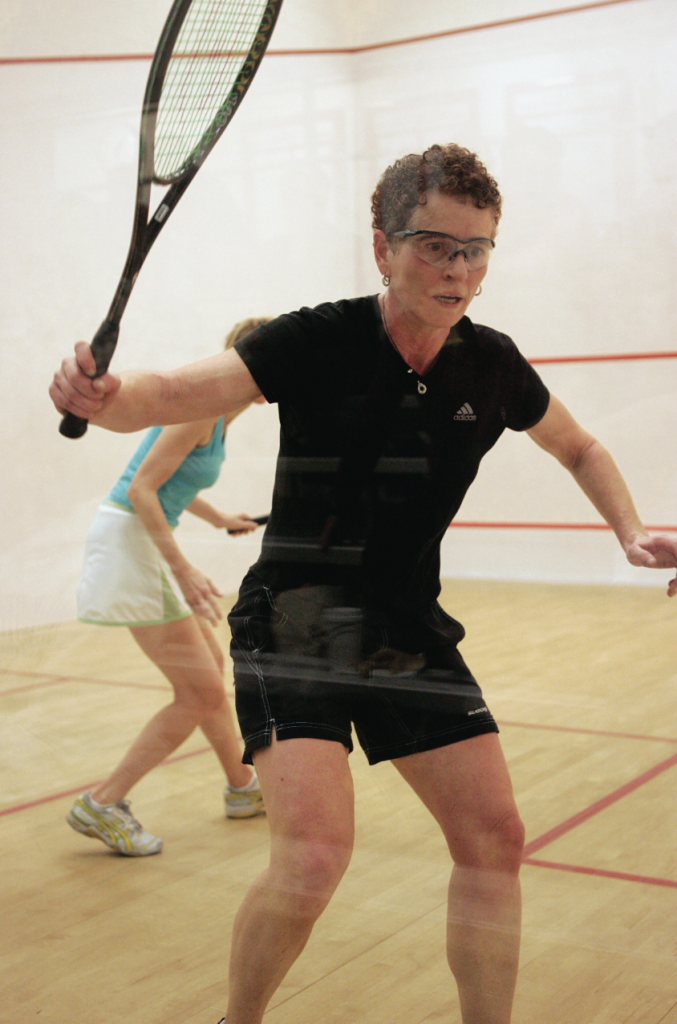
On the women’s side, Latasha Khan was in the unfamiliar role of being a decided underdog despite having won her record-setting seventh US Championship title last year. Why? Because Natalie Grainger’s citizenship application had been approved in February.
“When I found out my citizenship would be processed before the US Nationals, I was very excited,” said Grainger. “Being back in the middle of team trials events and nationals rankings was a great feeling.” Because of her desire to establish US Citizenship, it had been several years since Grainger was eligible to represent any country in international team events. And her presence on the US squad will undoubtedly put the American team in a strong position going into this summer’s Pan American Games.
“It was really good to be accepted into the mix by the US Team players,” said Grainger when asked how it felt to be in the running for a spot on the team. “With places for the Pan Am Games in Rio in July up for grabs, everyone had to bring their best games. So the level of squash didn’t suffer at Nationals, but the numbers did as there were only seven players in the Women’s Closed draw.”
While Grainger was “pushed” in the semifinals by Michelle Quibell (who took eight points in each of the first two games before falling 9-1 in the third), Khan couldn’t get it going in the final as Grainger ran away with it 0, 0, 3. But those were the only two matches Grainger had to play because of the small numbers entered. “Unfortunately the women’s pro draw was one of the disappointments,” said Grainger. “Not the quality of play, but the numbers. I understand that the West Coast is not exactly in most players’ backyard, but US Squash and women’s squash in the States has to find a way to encourage greater participation. Seven players in the Nationals is crazy. It’s the big title to win. Even if you’re not necessarily in the running to win, just being a part of it and having the chance to compete against the best players in the country is an experience. And a great excuse to get away for a weekend!”
Perhaps the one player with the best perspective on being “an excuse to get away for a weekend” rested in the hands (or hip) of Richard Millman. A year ago, Millman was fighting mightily just to hobble around the court in the Men’s 45+ division. And hobble is an understatement. For years, Millman threw his hat in the ring and took his phenomenal ball-control game to the semis or finals. But as the years went by, his hip became increasingly painful—and painful to watch. “I was on a lot of (painkilling) drugs all the time,” said Millman. “Before its legal scandals, Celebrex meant the difference between a bearable life and an unbearable one. I had to be sufficiently dosed up to play.”
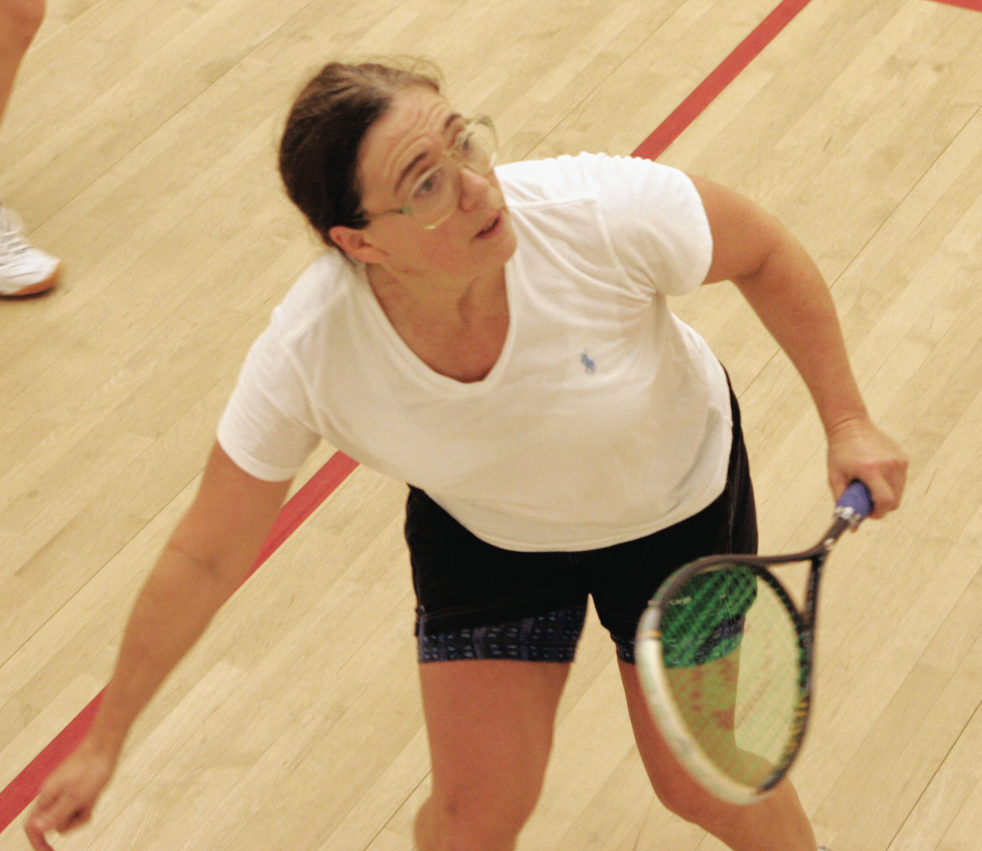 Until last spring. Just three weeks after he lost in the semifinals of the 45+ to Diniar Alikhan at Yale, Millman went to India for a Birmingham Hip Resurfacing rather than a hip replacement. In a nutshell, the BHR involves putting a titanium cap on the femur and then installing a titanium receptacle in the hip socket. Then the two are married back together rather than simply replacing the parts with robotic replacements. As a result, the recovery is quicker and the longterm prognosis much more palatable.
Until last spring. Just three weeks after he lost in the semifinals of the 45+ to Diniar Alikhan at Yale, Millman went to India for a Birmingham Hip Resurfacing rather than a hip replacement. In a nutshell, the BHR involves putting a titanium cap on the femur and then installing a titanium receptacle in the hip socket. Then the two are married back together rather than simply replacing the parts with robotic replacements. As a result, the recovery is quicker and the longterm prognosis much more palatable.
Until recently, BHR had not been FDA approved in the United States. And just over a month after Millman’s was performed in India, there was only one surgeon in the United States doing the BHR. Now there are at least five, and the number will only grow.
Though he admits to not having done his rehab religiously (“…and I paid the price for that…”), Millman was back on the court just two months post-surgery. A severe pull of the gluteas medius and the inability to walk for four days pushed Millman into full– blown dedicated physical therapy. “When I saw my new boss’s wife (at Kiawah Island) go in for her surgery in June and then make progress that put her way ahead of me, I really got going with the therapy.”
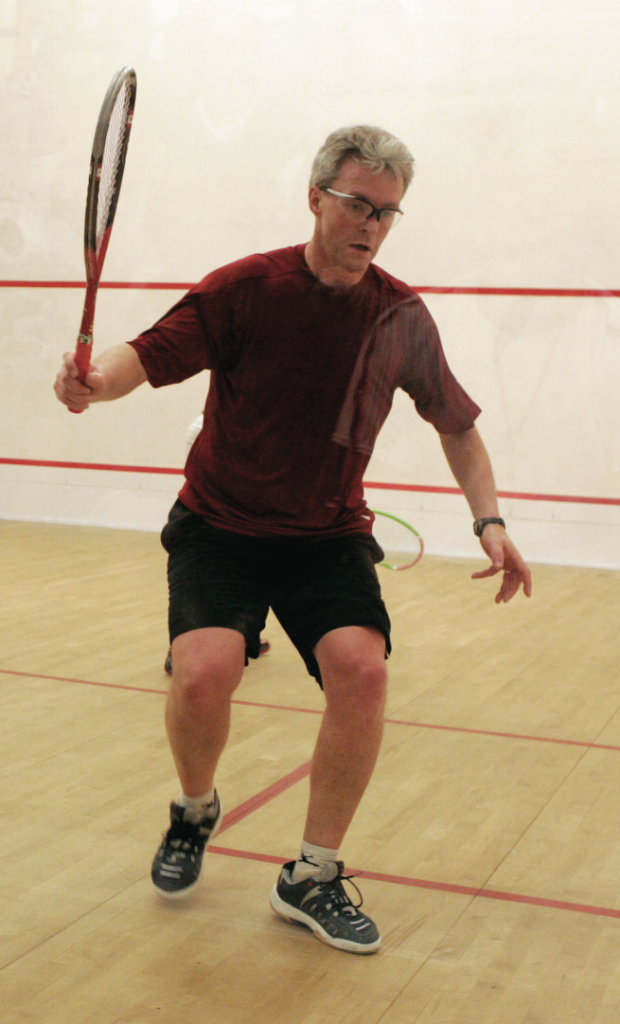
This year, Millman is “absolutely pain free.” And moving well enough that it’s his fitness that is holding him back instead of pain. In fact, Millman succeeded in exacting payback for his loss to his good friend and perennial rival Alikhan by beating him in five games in the 45+ semis in Portland. In the finals, Millman pushed Dominic Hughes hard before falling in four games to the man who has made a habit of winning national championships.
“In this year’s Nationals,” said Millman, “I wasn’t fit enough against Dominic. I was up 7-4 in the fourth and down 2-1 in games, but I was making wrong decisions because I wasn’t strong enough physically to beat him.”
But with the refreshing knowledge that he can get out and train pain free for the first time in years, Millman has set a new goal for himself that he hopes to achieve in two years. “I got to the semis of the over 40’s in the World Masters in 1999,” recalled Millman. “I’m really hoping to play it again some day. I’m hoping to spend the next two years really getting in shape to play the over 50’s in two years. In April I went running for an hour for the first time since 1998. I came back and ran the same course in 58 minutes the next time. My left hip was a bit stiff, but I can finally run three to five miles without even worrying about it now.”
Which may be reason enough for everyone in the Men’s 45+ to start worrying as they look to next year.
(Ed. Note: for complete results, visit ussquash.org, and click on RailStation. Space permitting, we will print additional photos in the DropShots section of our June edition.).


